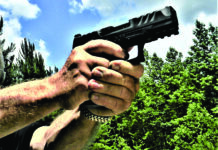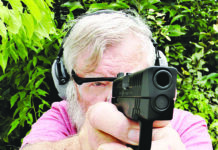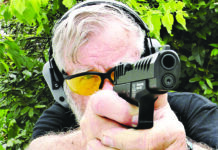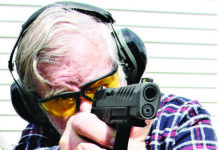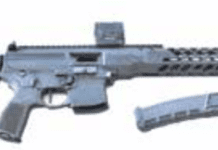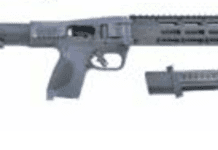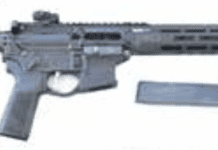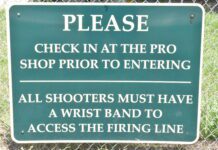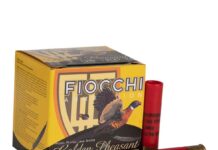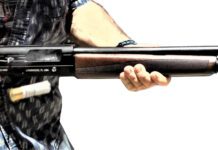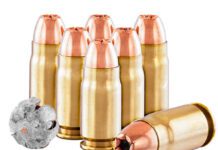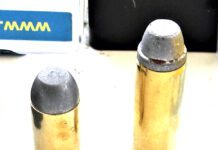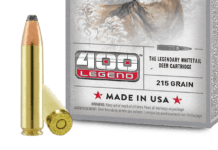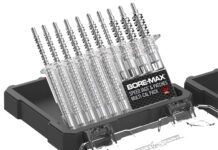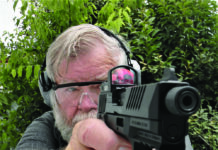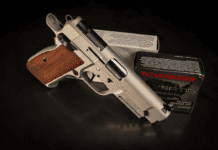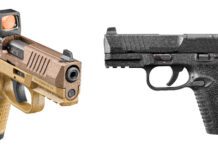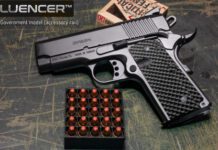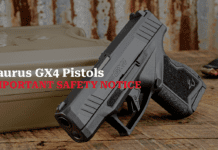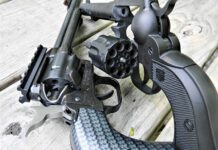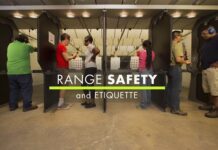Hot-Weather Carry: Talon IWB, Ted Blocker S18 Are Best Buys
SIG Holds on ATF Silencer Suit
Reflex Sights for Carry Guns: Leupold Bests Trijicon, Burris
Adding a red-dot reflex sight to a carry pistol has pros and cons. First, the cons. The total cost of the weapon system nearly doubles as the sights are almost as expensive as the pistol, the sights have a larger footprint than the typical rear sight, battery life must be monitored, and foul weather can diminish the capability of the sight. The pros are the sights offer faster target acquisition and ease of aiming. The ability to shoot faster and more accurately in situations under 25 yards are strong reasons to make the switch from iron sights to a reflex sight, so we wanted to investigate mounting a reflex sight on a pistol to see how a reflex sight would work on a carry gun. We chose a Glock 20 Gen 4 as our test platform for two reasons. Glocks are popular pistols among LE and civilians and because the G20 is chambered in 10mm, which has comparable power to a 41 Magnum. We wanted to rattle the innards of these tiny sights to see if anything would fall out, get loose, or go out of zero. Even though the G20 is a full-size pistol, we have found that with the proper holster, like those from Bravo Concealment, and a concealing garment, the G20 can be invisible to the untrained eye.
A reflex sight allows an operator to keep both eyes open and view a target through a small curved glass lens, which has a reticle projected onto it. A light-emitting diode projects a red dot, amber chevron, or other aiming point, giving the operator an unlimited field of view since there is no magnification and the aiming point projects out to infinity. This means that parallax will not affect sighting; place the aiming point on a target, and if zeroed properly, the target will be hit.
Think of them as mini heads-up displays for your pistol.
Hybrid IWB Holsters
A reader recently asked if we could do a test of IWB holsters and come up with the best balance of speed, retention, and access between Kydex, leather, and hybrid types - a tall order. But the South Carolina test team was eager to put these holsters to the test because most of us carry a concealed handgun on a daily basis and have a personal stake in the program. The holsters were worn for a minimum of a week and tested by drawing for at least fifty repetitions. We looked at a number of considerations to come up with what we liked the best and what we believe will work the best for most people. But as we found out, everyone is different.
Before you choose a holster, knowing how you will wear it is important. By placing a triple-checked unloaded handgun in your waistband (or better yet, a Rings or ASP fake gun), practicing the draw from standing, seated, and driving positions, you will obtain a better idea of the right holster position for your needs. As an example, some users do not have enough rotation in their shoulder for the FBI tilt in the small of the back, and others are too thin for near-the-hip carry. Drop is related to how the holster rides in relation to the belt, above or below the belt. Most makers offer a choice in how deep in the pants the holster rides.
For our consideration, we deemed access and retention to be the most important points. The shooter must be able to consistently reach the handgun and draw it correctly and quickly. This must be true for a spot on the belt just behind the hip and a sharp draw from the kidney position as well.
Of course, the holster must retain the handgun, and the handgun must be in the same position every time the user draws the gun. You should be able to jump up and land hard on your feet without dislodging the handgun. Holstering the handgun with one hand after drawing is also important and was given considerable weight during the test program.
Comfort is subjective, but quality isnt subjective when something comes apart, so quality and durability are serious concerns. Is the holster well made? Does it fit the individual handgun correctly? Will the holster last through years of daily carry and practice sessions?
The quality of mounting hardware is also important. With holsters offered with loops or snaps for both OWB and IWB carry, the holsters have to be considered as a system. The mounting hardware cannot break easily and it must fit correctly.
Also, it is no secret that Kydex is harder on a handguns finish than waxed leather. Bottom line, if you use your handgun and practice often, there will be finish degradation.
The carry handgun isnt a safe queen, so degrading the finish cannot be an overwhelming consideration. Just the same, since Kydex retains the handgun by friction on certain points, finish wear is evident.
Leather holsters also tend to wear the muzzle, so this wasnt a deal breaker.
For further details on the holsters tested and to read about more top-rated gear for 9mm handguns, purchase "The A Team: Concealable 9mm Handguns & Gear" from Gun Tests.
Firearms Accessory Quick Hits
Uncle Mike’s Introduces 3-Gun Competition Bag
Upgraded LaserLyte CM-K15B Offers Single Dot or Center Mass Laser Pattern
LaserLyte's Kryptonyte Center Mass laser system now offers users the option of choosing a single dot aiming point.
The Gunsmith’s Reference Library
Uncle Mike’s Reflex Adapter Plate Provides New Carry Options for the Reflex Holster
JP Enterprises Debuts Rimfire Conversions In Multiple Models
Back-Boring Shotgun Barrels
The modern-day shotgunner is now waking up to the benefits of back-boring in certain sporting applications. This may be just the common cycle of the trend, or perhaps this feature has finally found a permanent place in our list of optional features for the shotgun bore. Both Remington and Browning now offer this feature in their target guns. This may fool some gun owners into thinking their trap guns are obsolete; indeed, many will trade in perfectly good and serviceable guns and barrels to obtain this "new" feature.


